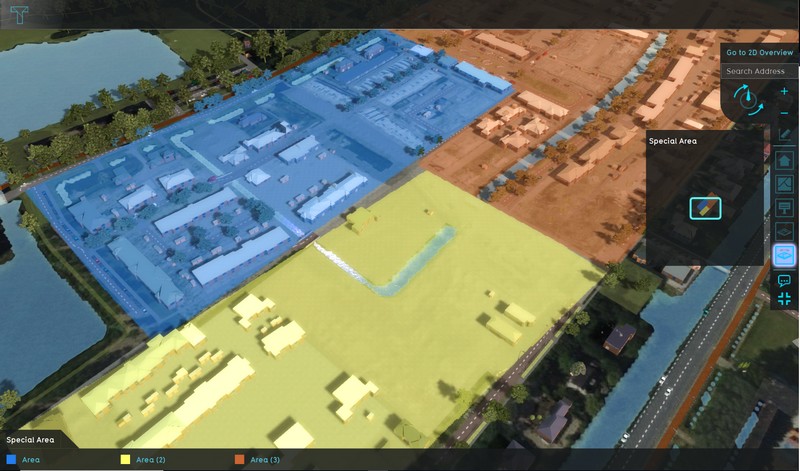Area Overlay: Difference between revisions
Jump to navigation
Jump to search
No edit summary |
|||
| Line 25: | Line 25: | ||
* [[How-to add and remove an overlay|Add and remove an overlay]] | * [[How-to add and remove an overlay|Add and remove an overlay]] | ||
* [[How-to edit an overlay legend|Edit an overlay legend]] | * [[How-to edit an overlay legend|Edit an overlay legend]] | ||
* [[How-to add and remove an attribute|Add and remove an Attribute]] | |||
{{Template:Overlay nav}} | {{Template:Overlay nav}} | ||
Revision as of 13:52, 3 April 2019

The Areas Overlay is an overlay which is used for displaying multiple areas in one overlay. When this overlay is added to a project, it can be activated by selecting the corresponding icon on the minimap. When activated, it displays the active areas as selected in the areas list. The areas appear in the color as selected in the area properties.
An Area Overlay has 2 properties which can be adjusted.
Name
- The Name of the Overlay
Selected / Unselected Areas
- Areas to be displayed. An empty checkbox means that that area will not be displayed, a checked box means that the area is displayed on this overlay.
Configuring the overlay
By default, the overlay does not display anything. The areas to be displayed must be configured first, by selecting or deselecting areas.
Name
- The name of the overlay. This is the name that will appear as the title of the overlay, displayed when hovering over the related icon in the minimap. It is also the text in the legend of the overlay. You can change this by altering the text in the "Name" field.
Selecting areas
- A list of available areas in the current project. Activating a area for display on the areas overlay is done by selecting the checkbox. Deactivating the area is done by deselecting the checkbox.
How-to's